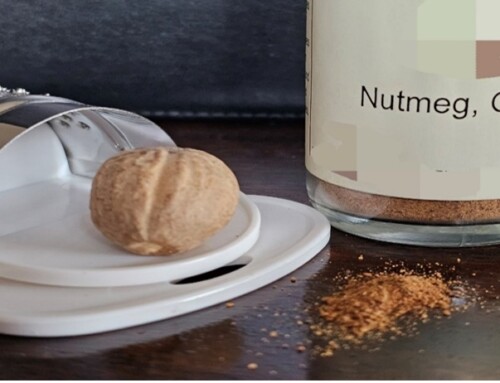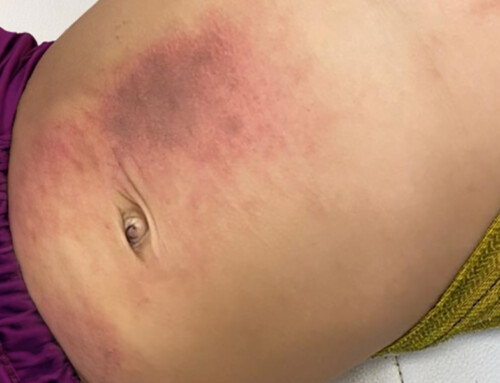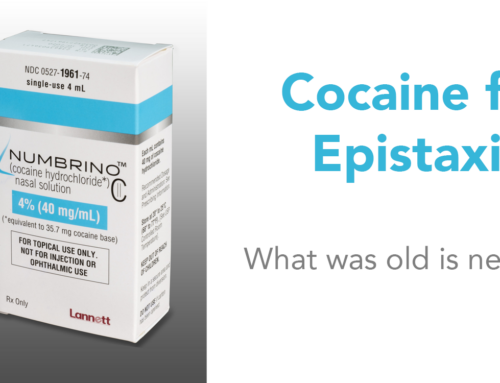 Though lipid rescue sounds like something from a junk food detox regimen, it’s one of the most exciting developments in emergency management of drug overdose in the last 20 years. Unlike charcoal which can lead to aspiration and has relatively little data showing improved outcomes, or dialysis which relies on convincing your nephrologist to come in at 3 am, lipid rescue is a readily available, cheap, safe therapeutic that we’ve been using in TPN for adults and children for decades. And it seems to work, but why aren’t we using it?
Though lipid rescue sounds like something from a junk food detox regimen, it’s one of the most exciting developments in emergency management of drug overdose in the last 20 years. Unlike charcoal which can lead to aspiration and has relatively little data showing improved outcomes, or dialysis which relies on convincing your nephrologist to come in at 3 am, lipid rescue is a readily available, cheap, safe therapeutic that we’ve been using in TPN for adults and children for decades. And it seems to work, but why aren’t we using it?
Historical Perspective
The first documented human use in 2006 described a 58 year old who received bupivacaine and mepivacaine for routine rotator cuff surgery. Toxicity from local anesthetics led to seizure and cardiac arrest, with the patient going through VTach, VFib, and ultimately asystole. Therapeutic interventions included 3 mg epinephrine, 2 mg atropine, 300 mg amiodarone, 40 U vasopressin, and 4 attempts at defibrillation over 20 minutes. Based on animal studies, anesthesiologist Meg Rosenblatt suggested administering 100 mL of 20% lipid emulsion (the dose still used today) while preparing for cardiopulmonary bypass and administering one more shock along with a dose of epinephrine and atropine. Within moments the patient had return of spontaneous circulation and was ultimately discharged home unharmed.
Indications for Lipid Rescue
Over the following years, lipid rescue has been championed by anesthesiologists such as Guy Weinberg, whose website LipidRescue serves as general reference as well as case repository. Use has expanded beyond local anesthetic toxicity to severe toxicity from bupropion, verapamil, quetiapine and more. Many believe that lipid emulsion soaks up lipophilic drugs such as anesthetics and psychotropics, increasing the overall volume of distribution and enhancing hepatic and renal elimination. In this way it can be thought of as intravascular activated charcoal. While animal studies do demonstrate marked decreases in serum and tissue levels of toxic drugs following administration of lipid rescue, animal and computer modeling suggest there’s more to it.
Not all topical anesthetics are equally cardiotoxic. Lidocaine is generally much better tolerated than bupivacaine. Bupivacaine’s cardiotoxicity correlates with its ability to interfere with fatty acid metabolism. The fatty acid rich lipid emulsion may overcome this metabolic blockade, supplying an injured myocardium with much needed ATP. This is analogous to the inotropic effect seen in high dose insulin therapy used for calcium channel blocker overdose; an energized heart is a heart with kick. Furthermore there is some suggestion that the tonic effects of lipid emulsion help to serve as a resuscitation fluid that can raise circulating volume in the face of hemodynamic collapse.
Theories why lipid therapy is being used less
So, if this is almost 10 years old, why talk about it here? During a recent interview with Dr. Weinberg on the ToxTalk podcast, he voiced concerns that use of lipid emulsion is dropping just as its true promise as a therapeutic is being discovered. Case reports are on the decline, reflecting decreased awareness and utilization, a reluctance by medical toxicologists to recommend it in any but the very sick, and inevitable loss of excitement over a therapy that is no longer the new kid on the block.
While initial case reports discussed use of an IV bolus to combat toxicity from injection medications, the majority of drug overdose deaths in the United States are the result of oral pain and psychiatric medications. Dr. Weinberg suggests that there may be a role for using lipid emulsion earlier in less sick patients as a continual infusion without a bolus. As the toxic drug is continually absorbed from the GI track, lipid emulsion infusion would absorb it and shuttle it to the liver and kidney for elimination. Low levels of emulsion may theoretically protect the heart from arrhythmia BEFORE the patient has a chance to code. The biggest pitfall he sees is when physicians initiate lipid rescue too late – when the patient may already be too sick to save.
This may reflect the bias of a true believer, or possibly the farsighted prediction of someone who understands the science. His latest article in Journal of Controlled Release uses animal and computer modeling to further explain the mechanism behind this deceptively simple antidote. Ultimately it seems the world is split between people who have never heard of lipid rescue and those who know of it but never use it. Hopefully this article has given you some insight and the take home points might provide you the confidence to use it on your next sick overdose case.
Take Home Points
- Lipid rescue should be considered for severe local anesthetic toxicity OR for patients requiring ACLS following overdose of drugs leading to severe CNS and cardiac toxicity. If you’re opening the code cart during an overdose, ask yourself why you’re NOT grabbing lipid emulsion also.
- Dosing calls for IV administration of 1.5 mL/kg of 20% lipid emulsion (100 mL in a 70 kg patient) followed by administration of a continuous drip of 0.25 – 0.5 ml/kg/min. Additional boluses may be required. Dosing up to 8 mL/kg has been tolerated without adverse effects. If you’ve never used it, you may be surprised that your hospital has it. Every hospital with operating rooms or that uses TPN has it in stock. If you’re unsure call your anesthesiologist or pharmacy.
- Lipemia can interfere with many lab measurements and discussion with technologists about handling lipemic samples is important.
- While administration of lipid rescue infusions in patients who are not critically ill may help to enhance drug metabolism and reduce serum levels, this is not currently standard practice. But stay tuned.
References
- Rosenblatt M a, Abel M, Fischer GW, Itzkovich CJ, Eisenkraft JB. Successful use of a 20% lipid emulsion to resuscitate a patient after a presumed bupivacaine-related cardiac arrest. Anesthes. 2006;105(1):217-8. PMID 16810015
- Sirianni AJ, Osterhoudt KC, Calello DP, Muller A a, Waterhouse MR, Goodkin MB, et al. Use of lipid emulsion in the resuscitation of a patient with prolonged cardiovascular collapse after overdose of bupropion and lamotrigine. Ann Emerg Med. 2008 Apr; 51(4):412-5, 415.e1 PMID 17766009
- Fettiplace MR, Weinberg GW. Multi-modal contributions to detoxification of acute pharmacotoxicity by a triglyceride micro-emulsion. J Control Release. 2015 Jan 28;198:62-70. PMID: 25483426




